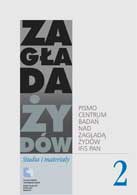Menu
- Main Page
- About us
- Research
- Publications
- Links
- Contact
- Archiwum
- Holocaust. Studies and Materials
the Center's Journal - NIGHT WITHOUT AND END - »FAILED CORRECTION«
- Wybór źródeł
- EHRI PL
News
Programme of Center's academic seminars for winter term 2025
We are pleased to announce the return of our scientific seminar series in less than a month, and warmly invite all interested parties to attend. The seminars will be held on the second or third Wednesday of each month, both in person at the Institute of Philosophy and Sociology of the Polis...
M. Turski Historical Award of Polityka for Justyna Majewska
It is with undisguised pride we report that our colleague Dr. Justyna Majewska has been awarded the Marian Turski POLITYKA Historical Prize for her book debut, "Mury i szczeliny. Przestrzenie getta warszawskiego /Walls and Slits. Spaces of the Warsaw Ghetto". We are very happy and...
Call for Articles - Holocaust Studies and Materials 2026
Call for Articles 2026 Call for Articles Connecting scholarly reflection on the Holocaust to the present - new sources and technologies in research The past decade has seen a breakthrough in Holocaust research, both in terms of the availability of archival sources and the digital ...
Farewell to Marian Turski
It is with profound sorrow that we bid farewell to Marian Turski—a distinguished journalist, historian, and Survivor. An extraordinary man whose voice resonated deeply, he not only shared the lessons of the past but actively championed courage, solidarity, and empathy in the face of evil. ...
Center in EHRI PL consortium
Polish Center for Holocaust Research of the Institute of Philosophy and Sociology of the Polish Academy of Sciences, together with the E. Ringelblum Jewish Historical Institute and the Center for Jewish Studies of the University of Lodz, are creating a national node of the European Holocaust Research Infrastructure within the framework of ERIC
NEWSLETTER
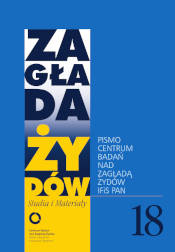 Zagłada Żydów.
Zagłada Żydów.
Studia i Materiały
nr 18, R. 2022
Warszawa 2022
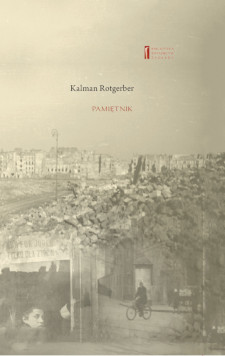 PAMIĘTNIK
PAMIĘTNIK
Kalman Rotgeber
oprac. Aleksandra Bańkowska, wstęp Jacek Leociak
Warszawa 2021
Zagłada Żydów.
Studia i Materiały
nr 17, R. 2021
Warszawa 2021
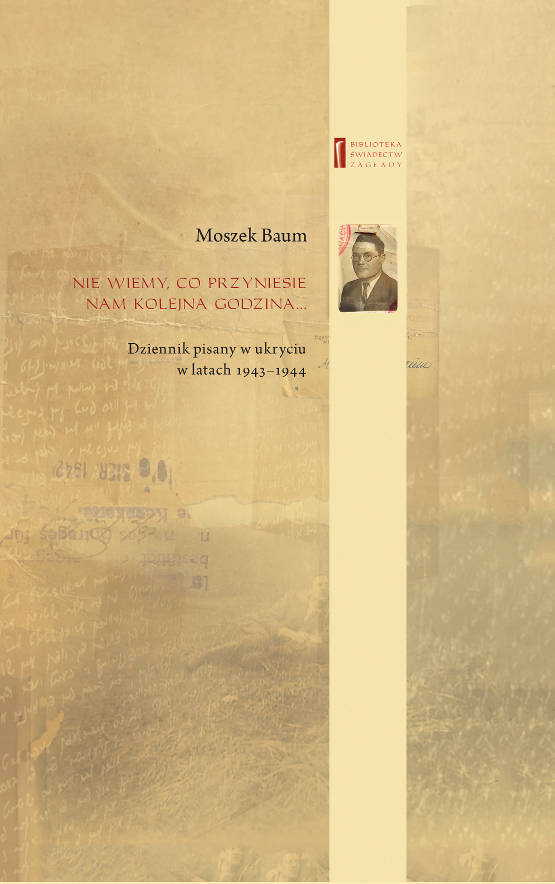 NIE WIEMY CO PRZYNIESIE NAM KOLEJNA GODZINA ...
NIE WIEMY CO PRZYNIESIE NAM KOLEJNA GODZINA ...
Dziennik pisany w ukryciu w latach 1943-1944
Moszek Baum, oprac. Barbara Engelking, tłum. z jidysz Monika Polit
Warszawa 2020
Zagłada Żydów.
Studia i Materiały
nr 16, R. 2020
Warszawa 2020
.jpg) Aryjskiego Żyda wspomnienia, łzy i myśli
Aryjskiego Żyda wspomnienia, łzy i myśli
Zapiski z okupacyjnej Warszawy
Sewek Okonowski, oprac. Marta Janczewska
 PISZĄCY TE SŁOWA JEST PRACOWNIKIEM
PISZĄCY TE SŁOWA JEST PRACOWNIKIEM
GETTOWEJ INSTYTUCJI ...
'z Dziennika' i inne pisma z łódzkiego getta
Józef Zelkowicz, tłum. z jidysz, oprac. i wstęp. Monika Polit
Warszawa 2019
CZYTAJĄC GAZETĘ NIEMIECKĄ ...
Dziennik pisany w ukryciu w Warszawie w latach 1943-1944
Jakub Hochberg, oprac. i wstępem opatrzyła Barbara Engelking
Warszawa 2019
Zagłada Żydów.
Studia i Materiały
nr 15, R. 2019
Warszawa 2019
.jpg) Zagłada Żydów.
Zagłada Żydów.
Studia i Materiały
nr 14, R. 2018
Warszawa 2018
 DALEJ JEST NOC. Losy Żydów w wybranych powiatach okupowanej Polski
DALEJ JEST NOC. Losy Żydów w wybranych powiatach okupowanej Polski
red. i wstęp Barbara Engelking, Jan Grabowski
Warszawa 2018
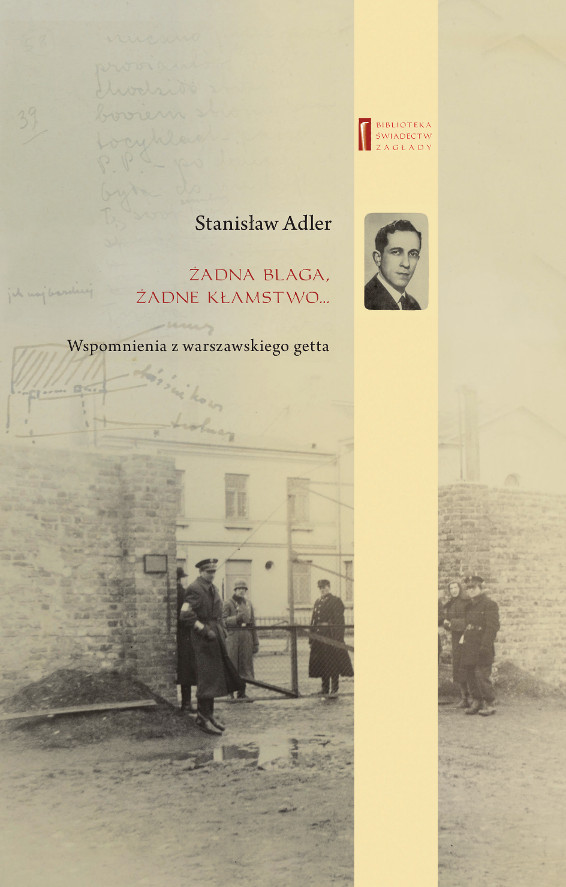 ŻADNA BLAGA, ŻADNE KŁAMSTWO ...
ŻADNA BLAGA, ŻADNE KŁAMSTWO ...
Wspomnienia z warszawskiego getta
Stanisław Adler, oprac. i wstępem opatrzyła Marta Janczewska
Warszawa 2018
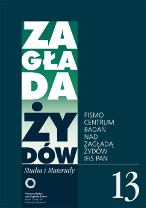 Zagłada Żydów.
Zagłada Żydów.
Studia i Materiały
nr 13, R. 2017
Warszawa 2017
 TYLEŚMY JUŻ PRZESZLI ...
TYLEŚMY JUŻ PRZESZLI ...
Dziennik pisany w bunkrze (Żółkiew 1942-1944)
Clara Kramer, oprac. i wstępem opatrzyła Anna Wylegała
Warszawa 2017
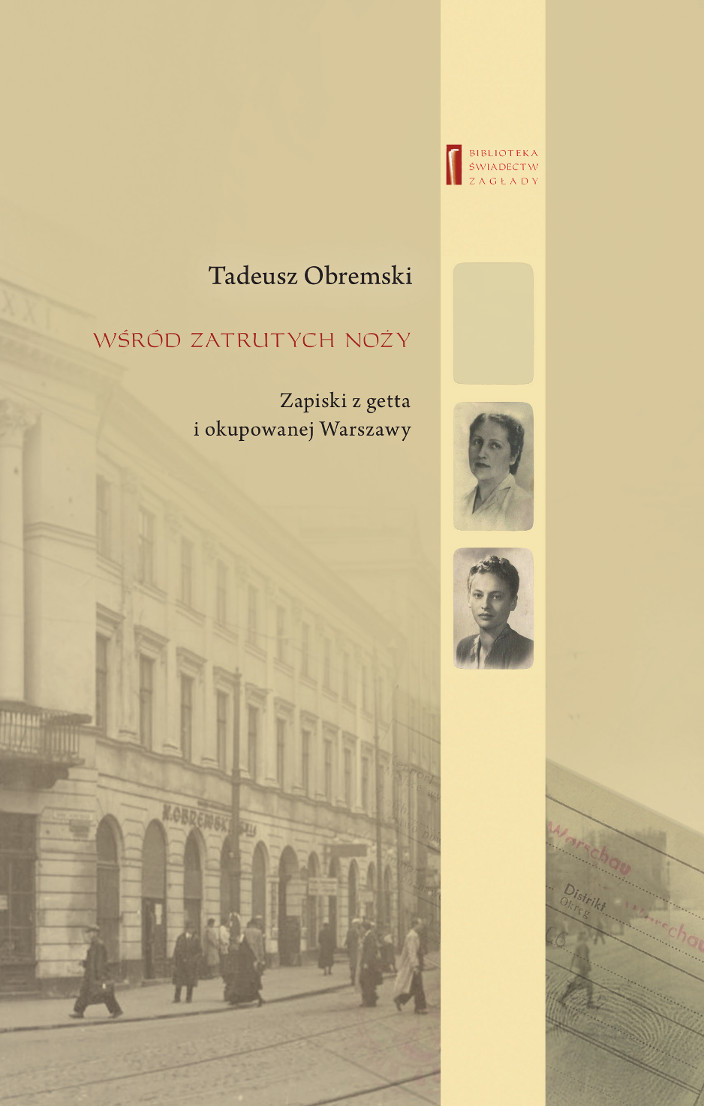 WŚRÓD ZATRUTYCH NOŻY ...
WŚRÓD ZATRUTYCH NOŻY ...
Zapiski z getta i okupowanej Warszawy
Tadeusz Obremski, oprac. i wstępem opatrzyła Agnieszka Haska
Warszawa 2017
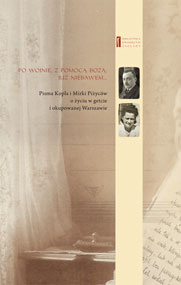 PO WOJNIE, Z POMOCĄ BOŻĄ, JUŻ NIEBAWEM ...
PO WOJNIE, Z POMOCĄ BOŻĄ, JUŻ NIEBAWEM ...
Pisma Kopla i Mirki Piżyców o życiu w getcie i okupowanej Warszawie
oprac. i wstępem opatrzyła Barbara Engelking i Havi Dreifuss
Warszawa 2017
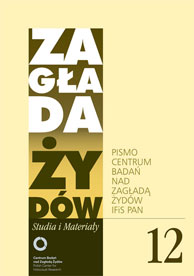 Zagłada Żydów.
Zagłada Żydów.
Studia i Materiały
nr 12, R. 2016
Warszawa 2016
.jpg) SNY CHOCIAŻ MAMY WSPANIAŁE ...
SNY CHOCIAŻ MAMY WSPANIAŁE ...
Okupacyjne dzienniki Żydów z okolic Mińska Mazowieckiego
oprac. i wstępem opatrzyła Barbara Engelking
Warszawa 2016
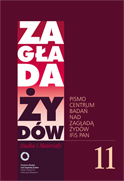 Zagłada Żydów.
Zagłada Żydów.
Studia i Materiały
nr 11, R. 2015
Warszawa 2015
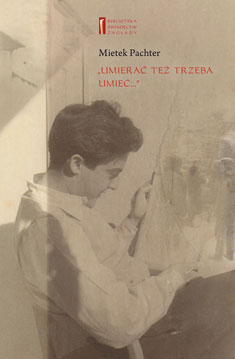 Mietek Pachter
Mietek Pachter
UMIERAĆ TEŻ TRZEBA UMIEĆ ...
oprac. B. Engelking
Warszawa 2015
 Zagłada Żydów.
Zagłada Żydów.
Studia i Materiały
nr 10, t. I-II, R. 2014
Warszawa 2015
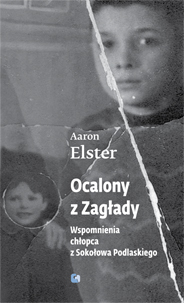 OCALONY Z ZAGŁADY
OCALONY Z ZAGŁADY
Wspomnienia chłopca z Sokołowa Podlaskiego
tłum. Elżbieta Olender-Dmowska
red .B. Engelking i J. Grabowski
Warszawa 2014
 ZAGŁADA ŻYDÓW. STUDIA I MATERIAŁY
ZAGŁADA ŻYDÓW. STUDIA I MATERIAŁY
vol. 9 R. 2013
Pismo Centrum Badań nad Zagładą Żydów IFiS PAN
Warszawa 2013
 ... TĘSKNOTA NACHODZI NAS JAK CIĘŻKA CHOROBA ...
... TĘSKNOTA NACHODZI NAS JAK CIĘŻKA CHOROBA ...
Korespondencja wojenna rodziny Finkelsztejnów, 1939-1941
oprac. i wstępem opatrzyła Ewa Koźmińska-Frejlak
Warszawa 2012
Raul Hilberg
PAMIĘĆ I POLITYKA. Droga historyka Zagłady
tłum. Jerzy Giebułtowski
Warszawa 2012
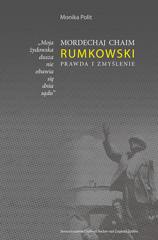 Monika Polit
Monika Polit
"Moja żydowska dusza nie obawia się dnia sądu."
Mordechaj Chaim Rumkowski. Prawda i zmyślenie
Warszawa 2012
.jpg) Dariusz Libionka i Laurence Weinbaum
Dariusz Libionka i Laurence Weinbaum
Bohaterowie, hochsztaplerzy, opisywacze. Wokół Żydowskiego Związku Wojskowego
Warszawa 2011
.jpg) Zagłada Żydów.
Zagłada Żydów.
Studia i Materiały
R. 2011, nr. 7; Warszawa 2011
.jpg) Jan Grabowski
Jan Grabowski
JUDENJAGD. Polowanie na Żydów 1942.1945.
Studium dziejów pewnego powiatu
Warszawa 2011
.jpg) Stanisław Gombiński (Jan Mawult)
Stanisław Gombiński (Jan Mawult)
Wspomnienia policjanta z warszawskiego getta
oprac. i wstęp Marta Janczewska
Warszawa 2010
Holocaust Studies and Materials
Journal of the Polish Center for Holocaust Research
Warssaw 2010
.jpg) Żydów łamiących prawo należy karać śmiercią!
Żydów łamiących prawo należy karać śmiercią!
"Przestępczość" Żydów w Warszawie, 1939-1942
B. Engelking, J. Grabowski
Warszawa 2010
Zagłada Żydów.
Studia i Materiały
R. 2010, nr. 6; Warszawa 2010
Wybór źródeł do nauczania o zagładzie Żydów
Ćwiczenia ze źródłami
red. A. Skibińska, R. Szuchta
Warszawa 2010
.jpg) W Imię Boże!
W Imię Boże!
Cecylia Gruft
oprac. i wstęp Łukasz Biedka
Warszawa 2009
Zagłada Żydów.
Studia i Materiały
R. 2009, nr. 5; Warszawa 2009
.jpg) Żydzi w powstańczej Warszawie
Żydzi w powstańczej Warszawie
Barbara Engelking i Dariusz Libionka
Warszawa 2009
 Reportaże z warszawskiego getta
Reportaże z warszawskiego getta
Perec Opoczyński
Warszawa 2009
 Notatnik
Notatnik
Szmul Rozensztajn
Warszawa 2008
.jpg) Holocaust
Holocaust
Studies and Materials.
English edition
2008, vol. 1; Warsaw 2008
.jpg) Źródła do badań nad zagładą Żydów na okupowanych ziemiach polskich
Źródła do badań nad zagładą Żydów na okupowanych ziemiach polskich
Przewodnik archiwalno-bibliograficzny
Alina Skibińska, wsp. Marta Janczewska, Dariusz Libionka, Witold Mędykowski, Jacek Andrzej Młynarczyk, Jakub Petelewicz, Monika Polit
Warszawa 2007
Zagłada Żydów. Studia i Materiały
R. 2007, nr. 3; Warszawa 2007
Prowincja noc.
Życie i zagłada Żydów w dystrykcie warszawskim
Warszawa 2007
.jpg) Utajone miasto.
Utajone miasto.
Żydzi po 'aryjskiej' stronie Warszawy [1941-1944]
Gunnar S Paulsson
Kraków 2007
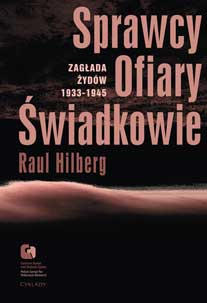 Sprawcy, Ofiary, Świadkowie.
Sprawcy, Ofiary, Świadkowie.
Zagłada Żydów, 1933-1944
Raul Hilberg
Warszawa 2007
Zagłada Żydów. Studia i Materiały
R. 2006, nr. 2; Warszawa 2006
"Jestem Żydem, chcę wejść!".
Hotel Polski w Warszawie, 1943.
Agnieszka Haska
Warszawa 2006
Zagłada Żydów. Studia i Materiały
R. 2005, nr. 1; Warszawa 2005
.jpg) 'Ja tego Żyda znam!'
'Ja tego Żyda znam!'
Szantażowanie Żydów w Warszawie, 1939-1943.
Jan Grabowski
Warszawa 2004
 'Szanowny panie Gistapo!'
'Szanowny panie Gistapo!'
Donosy do władz niemieckich w Warszawie i okolichach, 1940-1941
Barbara Engelking, Warszawa 2003
aaa
 Zagłada Żydów.
Zagłada Żydów.
Studia i Materiały
nr 18, R. 2022
Warszawa 2022
 PAMIĘTNIK
PAMIĘTNIK
Kalman Rotgeber
oprac. Aleksandra Bańkowska, wstęp Jacek Leociak
Warszawa 2021
Zagłada Żydów.
Studia i Materiały
nr 17, R. 2021
Warszawa 2021
 NIE WIEMY CO PRZYNIESIE NAM KOLEJNA GODZINA ...
NIE WIEMY CO PRZYNIESIE NAM KOLEJNA GODZINA ...
Dziennik pisany w ukryciu w latach 1943-1944
Moszek Baum, oprac. Barbara Engelking, tłum. z jidysz Monika Polit
Warszawa 2020
Zagłada Żydów.
Studia i Materiały
nr 16, R. 2020
Warszawa 2020
.jpg) Aryjskiego Żyda wspomnienia, łzy i myśli
Aryjskiego Żyda wspomnienia, łzy i myśli
Zapiski z okupacyjnej Warszawy
Sewek Okonowski, oprac. Marta Janczewska
 PISZĄCY TE SŁOWA JEST PRACOWNIKIEM
PISZĄCY TE SŁOWA JEST PRACOWNIKIEM
GETTOWEJ INSTYTUCJI ...
'z Dziennika' i inne pisma z łódzkiego getta
Józef Zelkowicz, tłum. z jidysz, oprac. i wstęp. Monika Polit
Warszawa 2019
CZYTAJĄC GAZETĘ NIEMIECKĄ ...
Dziennik pisany w ukryciu w Warszawie w latach 1943-1944
Jakub Hochberg, oprac. i wstępem opatrzyła Barbara Engelking
Warszawa 2019
Zagłada Żydów.
Studia i Materiały
nr 15, R. 2019
Warszawa 2019
.jpg) Zagłada Żydów.
Zagłada Żydów.
Studia i Materiały
nr 14, R. 2018
Warszawa 2018
 DALEJ JEST NOC. Losy Żydów w wybranych powiatach okupowanej Polski
DALEJ JEST NOC. Losy Żydów w wybranych powiatach okupowanej Polski
red. i wstęp Barbara Engelking, Jan Grabowski
Warszawa 2018
 ŻADNA BLAGA, ŻADNE KŁAMSTWO ...
ŻADNA BLAGA, ŻADNE KŁAMSTWO ...
Wspomnienia z warszawskiego getta
Stanisław Adler, oprac. i wstępem opatrzyła Marta Janczewska
Warszawa 2018
 Zagłada Żydów.
Zagłada Żydów.
Studia i Materiały
nr 13, R. 2017
Warszawa 2017
 TYLEŚMY JUŻ PRZESZLI ...
TYLEŚMY JUŻ PRZESZLI ...
Dziennik pisany w bunkrze (Żółkiew 1942-1944)
Clara Kramer, oprac. i wstępem opatrzyła Anna Wylegała
Warszawa 2017
 WŚRÓD ZATRUTYCH NOŻY ...
WŚRÓD ZATRUTYCH NOŻY ...
Zapiski z getta i okupowanej Warszawy
Tadeusz Obremski, oprac. i wstępem opatrzyła Agnieszka Haska
Warszawa 2017
 PO WOJNIE, Z POMOCĄ BOŻĄ, JUŻ NIEBAWEM ...
PO WOJNIE, Z POMOCĄ BOŻĄ, JUŻ NIEBAWEM ...
Pisma Kopla i Mirki Piżyców o życiu w getcie i okupowanej Warszawie
oprac. i wstępem opatrzyła Barbara Engelking i Havi Dreifuss
Warszawa 2017
 Zagłada Żydów.
Zagłada Żydów.
Studia i Materiały
nr 12, R. 2016
Warszawa 2016
.jpg) SNY CHOCIAŻ MAMY WSPANIAŁE ...
SNY CHOCIAŻ MAMY WSPANIAŁE ...
Okupacyjne dzienniki Żydów z okolic Mińska Mazowieckiego
oprac. i wstępem opatrzyła Barbara Engelking
Warszawa 2016
 Zagłada Żydów.
Zagłada Żydów.
Studia i Materiały
nr 11, R. 2015
Warszawa 2015
 Mietek Pachter
Mietek Pachter
UMIERAĆ TEŻ TRZEBA UMIEĆ ...
oprac. B. Engelking
Warszawa 2015
 Zagłada Żydów.
Zagłada Żydów.
Studia i Materiały
nr 10, t. I-II, R. 2014
Warszawa 2015
 OCALONY Z ZAGŁADY
OCALONY Z ZAGŁADY
Wspomnienia chłopca z Sokołowa Podlaskiego
tłum. Elżbieta Olender-Dmowska
red .B. Engelking i J. Grabowski
Warszawa 2014
 ZAGŁADA ŻYDÓW. STUDIA I MATERIAŁY
ZAGŁADA ŻYDÓW. STUDIA I MATERIAŁY
vol. 9 R. 2013
Pismo Centrum Badań nad Zagładą Żydów IFiS PAN
Warszawa 2013
 ... TĘSKNOTA NACHODZI NAS JAK CIĘŻKA CHOROBA ...
... TĘSKNOTA NACHODZI NAS JAK CIĘŻKA CHOROBA ...
Korespondencja wojenna rodziny Finkelsztejnów, 1939-1941
oprac. i wstępem opatrzyła Ewa Koźmińska-Frejlak
Warszawa 2012
Raul Hilberg
PAMIĘĆ I POLITYKA. Droga historyka Zagłady
tłum. Jerzy Giebułtowski
Warszawa 2012
 Monika Polit
Monika Polit
"Moja żydowska dusza nie obawia się dnia sądu."
Mordechaj Chaim Rumkowski. Prawda i zmyślenie
Warszawa 2012
.jpg) Dariusz Libionka i Laurence Weinbaum
Dariusz Libionka i Laurence Weinbaum
Bohaterowie, hochsztaplerzy, opisywacze. Wokół Żydowskiego Związku Wojskowego
Warszawa 2011
.jpg) Zagłada Żydów.
Zagłada Żydów.
Studia i Materiały
R. 2011, nr. 7; Warszawa 2011
.jpg) Jan Grabowski
Jan Grabowski
JUDENJAGD. Polowanie na Żydów 1942.1945.
Studium dziejów pewnego powiatu
Warszawa 2011
.jpg) Stanisław Gombiński (Jan Mawult)
Stanisław Gombiński (Jan Mawult)
Wspomnienia policjanta z warszawskiego getta
oprac. i wstęp Marta Janczewska
Warszawa 2010
Holocaust Studies and Materials
Journal of the Polish Center for Holocaust Research
Warssaw 2010
.jpg) Żydów łamiących prawo należy karać śmiercią!
Żydów łamiących prawo należy karać śmiercią!
"Przestępczość" Żydów w Warszawie, 1939-1942
B. Engelking, J. Grabowski
Warszawa 2010
Zagłada Żydów.
Studia i Materiały
R. 2010, nr. 6; Warszawa 2010
Wybór źródeł do nauczania o zagładzie Żydów
Ćwiczenia ze źródłami
red. A. Skibińska, R. Szuchta
Warszawa 2010
.jpg) W Imię Boże!
W Imię Boże!
Cecylia Gruft
oprac. i wstęp Łukasz Biedka
Warszawa 2009
Zagłada Żydów.
Studia i Materiały
R. 2009, nr. 5; Warszawa 2009
.jpg) Żydzi w powstańczej Warszawie
Żydzi w powstańczej Warszawie
Barbara Engelking i Dariusz Libionka
Warszawa 2009
 Reportaże z warszawskiego getta
Reportaże z warszawskiego getta
Perec Opoczyński
Warszawa 2009
 Notatnik
Notatnik
Szmul Rozensztajn
Warszawa 2008
.jpg) Holocaust
Holocaust
Studies and Materials.
English edition
2008, vol. 1; Warsaw 2008
.jpg) Źródła do badań nad zagładą Żydów na okupowanych ziemiach polskich
Źródła do badań nad zagładą Żydów na okupowanych ziemiach polskich
Przewodnik archiwalno-bibliograficzny
Alina Skibińska, wsp. Marta Janczewska, Dariusz Libionka, Witold Mędykowski, Jacek Andrzej Młynarczyk, Jakub Petelewicz, Monika Polit
Warszawa 2007
Zagłada Żydów. Studia i Materiały
R. 2007, nr. 3; Warszawa 2007
Prowincja noc.
Życie i zagłada Żydów w dystrykcie warszawskim
Warszawa 2007
.jpg) Utajone miasto.
Utajone miasto.
Żydzi po 'aryjskiej' stronie Warszawy [1941-1944]
Gunnar S Paulsson
Kraków 2007
 Sprawcy, Ofiary, Świadkowie.
Sprawcy, Ofiary, Świadkowie.
Zagłada Żydów, 1933-1944
Raul Hilberg
Warszawa 2007
Zagłada Żydów. Studia i Materiały
R. 2006, nr. 2; Warszawa 2006
"Jestem Żydem, chcę wejść!".
Hotel Polski w Warszawie, 1943.
Agnieszka Haska
Warszawa 2006
Zagłada Żydów. Studia i Materiały
R. 2005, nr. 1; Warszawa 2005
.jpg) 'Ja tego Żyda znam!'
'Ja tego Żyda znam!'
Szantażowanie Żydów w Warszawie, 1939-1943.
Jan Grabowski
Warszawa 2004
 'Szanowny panie Gistapo!'
'Szanowny panie Gistapo!'
Donosy do władz niemieckich w Warszawie i okolichach, 1940-1941
Barbara Engelking, Warszawa 2003
aaa
Nowy Swiat St. 72, 00-330 Warsaw; POLAND;
Palac Staszica room 120
e-mail: centrum@holocaustresearch.pl
A Failed ‘Corrective’
A Failed ‘Corrective’
27.02.2019 11:58:11
Editor's of the book »Dalej jest noc. Losy Żydów w wybranych powiatach okupowanej Polski (Night Without an End. The fate of Jews in selected counties of occupied Poland)« prof. Barbara Engelking and prof Jan Grabowski response to brochure published by dr Tomasz Domański and the Institute of National Remembrance
We are the editors of the book Dalej jest noc. Losy Żydów w wybranych powiatach okupowanej Polski (Night Without an End. The fate of Jews in selected counties of occupied Poland), which appeared in April 2018. Work on the volume took several years and required wide-ranging archival and library research, finding accounts or collecting them ourselves, as well as preparing appropriate methodological tools to ensure a correct interpretation of the gathered material. We were hoping that the book would spark reactions among scholars and inspire serious academic debate. For this reason, we were interested in reading the brochure Correcting the Picture? Reflections on the Sources used in Dalej jest noc. Losy Żydów w wybranych powiatach okupowanej Polski by Dr. Tomasz Domański from the Institute of National Remembrance, published as a supplement to the IPN Bulletin.
 Due to the length of the brochure, we were expecting an in-depth analysis of the studies contained in our volume. However, our impression is that the charges put forward by the reviewer – some of them very specific, others more general – as well as a number of attacks for which there is no justification whatsoever, are evidence that he is writing in line with a preconceived thesis, the idea being to discredit a priori all of our findings presented in nine different studies spanning a total of 1700 pages. We are also sorry to note that the objections, formulated with considerable arrogance, are not supported by substantiated claims as to the merit of our work. One would in vain look for counterarguments invalidating our findings regarding conditions during the period in question in the review.
Due to the length of the brochure, we were expecting an in-depth analysis of the studies contained in our volume. However, our impression is that the charges put forward by the reviewer – some of them very specific, others more general – as well as a number of attacks for which there is no justification whatsoever, are evidence that he is writing in line with a preconceived thesis, the idea being to discredit a priori all of our findings presented in nine different studies spanning a total of 1700 pages. We are also sorry to note that the objections, formulated with considerable arrogance, are not supported by substantiated claims as to the merit of our work. One would in vain look for counterarguments invalidating our findings regarding conditions during the period in question in the review.
For example, Dr. Tomasz Domański formulates the charge that in a number of cases our analysis focuses on German consolidated counties (Kreishauptmannschaften), while in other cases Polish pre-war counties are analyzed. Meanwhile, this issue, as well as the decision to study these particular territories rather than others, are clearly explained in the general introduction as well as in each of the studies. The micro-historical research methodology applied to the smaller, pre-war Polish counties is exactly the same as that applied to the larger consolidated counties, whereas the rationale for modifying the boundaries of the territorial units examined is discussed at length in the book. Therefore, we cannot agree with the charge that our methodology lacks credibility in this respect.
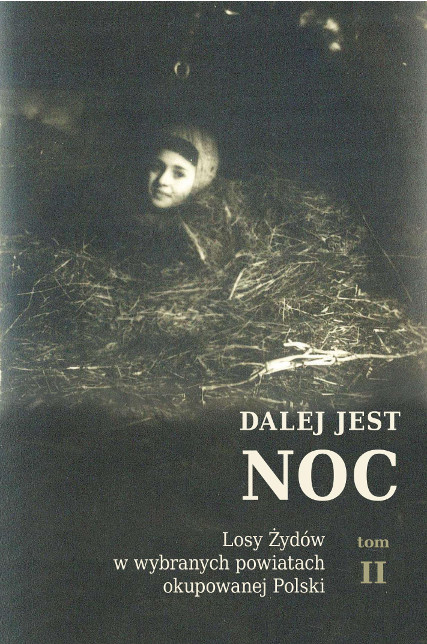 Another point that we touch on and which Dr. Domański objects to is the issue of Polish agency within the administrative structures of occupied Poland. For the author of the review – and this is reflected in the whole official narrative of the Institute of National Remembrance – all Polish agency on the official, state, level ends the moment the occupation begins. There seems to be a shared belief at the Institute of National Remembrance that the influence of Poles on the actions of the administrative apparatus ceased when Polish statehood ended. But the historical reality was more complex. The German occupation system – as historians from all the countries of occupied Europe well know – aimed (if this was in the occupier’s interest or was not too important an issue) as far as possible to involve and co-opt local forces. This was seen especially in cities, towns and at the lower level of village authorities. An important area indicating that Poles did retain agency was the activity of the judiciary as a whole, which is not addressed in the review at all. There, too, the Germans relied on the Poles, leaving them greater or smaller room to act at their own discretion. This is similar to what what was happening in the Ukraine, in the occupied Soviet territories, and in the Balkans, not to mention the occupied countries of Western Europe. One has but to consult the works of Max Bergholz, Omer Bartov, Christopher R. Browning, Evgeny Finkel, Tal Bruttmann, Laurent Joly, Martin Dean, Gabriel Finder and Alexander Prusin or the most recent research by Grzegorz Rossoliński-Liebe, to understand what methods the Germans used to manage the occupied territories.
Another point that we touch on and which Dr. Domański objects to is the issue of Polish agency within the administrative structures of occupied Poland. For the author of the review – and this is reflected in the whole official narrative of the Institute of National Remembrance – all Polish agency on the official, state, level ends the moment the occupation begins. There seems to be a shared belief at the Institute of National Remembrance that the influence of Poles on the actions of the administrative apparatus ceased when Polish statehood ended. But the historical reality was more complex. The German occupation system – as historians from all the countries of occupied Europe well know – aimed (if this was in the occupier’s interest or was not too important an issue) as far as possible to involve and co-opt local forces. This was seen especially in cities, towns and at the lower level of village authorities. An important area indicating that Poles did retain agency was the activity of the judiciary as a whole, which is not addressed in the review at all. There, too, the Germans relied on the Poles, leaving them greater or smaller room to act at their own discretion. This is similar to what what was happening in the Ukraine, in the occupied Soviet territories, and in the Balkans, not to mention the occupied countries of Western Europe. One has but to consult the works of Max Bergholz, Omer Bartov, Christopher R. Browning, Evgeny Finkel, Tal Bruttmann, Laurent Joly, Martin Dean, Gabriel Finder and Alexander Prusin or the most recent research by Grzegorz Rossoliński-Liebe, to understand what methods the Germans used to manage the occupied territories.
Another large part of Dr. Domański’s general charges is concerned with the role (inappropriately treated, in the reviewer’s opinion) of the blue police. Dr. Domański writes: ‘One may get the impression that the authors intentionally fail to make any mention of the German provenance of this formation. Seeming, for the most part, to use the name given to it by the Germans (Polnische Polizei), they tend to use the term ‘Polish police’ without capital letters or quotation marks, failing to explain its true nature to the reader, which, additionally, on the linguistic level, strengthens the impression that this was a Polish and not a German force. They portray it as if it was part of a Polish state functioning alongside the Germans.’ However, the reviewer does not cite any research that would invalidate our findings regarding the participation of this formation in the extermination of Polish Jews. Meanwhile, across hundreds of pages, and as thoroughly as possible, we describe the enormous agency of the PP in this particular enterprise. Polish policemen – the vast majority of whom were pre-war officers of the Polish State Police – not only took part in starving the ghettos and despoiling Jews, but also in practically all of the liquidation operations in the General Government. After the ghettos had been liquidated, they were among the most ‘efficient’ murderers tracking Jews hiding on the Aryan side. In our studies, we provide numerous examples of Polish policemen murdering Jews of their own will, without the help or knowledge of the Germans. The sources provide substantial evidence that they showed considerable initiative in this field. The author of the brochure seems not to notice this at all. This is only a handful of examples of the astonishing logic followed by the reviewer in his critical remarks.
.jpg) The author of the report accuses us of ‘manipulating the sources’, failing to consider ‘some accounts, but also selectively using the read material [, which] essentially determines the content of the book’. The point is that the choice of sources is and always has been the prerogative of the researcher. No one uses all the sources in the final version of their text, nor, even less, cites all of them in full – this is the role of primary source collections; this charge, therefore, is not worthy of being examined. If the allegedly omitted sources could alter the content of our narrative in any significant way, the reviewer should have mentioned them or at least given the titles of the documents and their archival or library reference numbers. He fails to provide such information in the brochure, however. The fact that certain archival materials have not been referenced does not mean that research was not conducted in the relevant archives either. Tomasz Domański also claims that we do not discuss in detail the value of all of the sources used in our volumes in the introduction. This is an unfounded criticism; after all, the role of an introduction is to introduce the overall essence of a given topic, while issues pertaining to the methodology used in analyzing different sources are discussed in considerable detail at the beginning of each study. It is astonishing that for the reviewer, ‘an analysis of the source base actually used to describe the conditions in particular ‘powiats’ shows that the main sources [used] are, first of all, all kinds of survivor accounts and memoirs (less often Polish memoir literature) deposited in a small number of archives, printed or available online (e.g. yizkor books in an abbreviated English-language version), supplemented by trial records from the so-called ‘sierpniówki’, and to a much lesser extent any of the other mentioned documents’. It is difficult to find a more glaring example of a biased approach to a book under review. Our powiat studies, based on one of the most exhaustive archival and library searches in the history of Holocaust studies, reference nearly all the available types of sources, including Polish pre-war sources, sources produced by the German administration, documents of the Polish underground, documents of the Polish town and village authorities, occupation-era court records, both for German and Polish courts, police and crime records, reports prepared by private institutions – the list is so long that it would take a whole page to provide it in full! However, the reviewer seems not to notice this.
The author of the report accuses us of ‘manipulating the sources’, failing to consider ‘some accounts, but also selectively using the read material [, which] essentially determines the content of the book’. The point is that the choice of sources is and always has been the prerogative of the researcher. No one uses all the sources in the final version of their text, nor, even less, cites all of them in full – this is the role of primary source collections; this charge, therefore, is not worthy of being examined. If the allegedly omitted sources could alter the content of our narrative in any significant way, the reviewer should have mentioned them or at least given the titles of the documents and their archival or library reference numbers. He fails to provide such information in the brochure, however. The fact that certain archival materials have not been referenced does not mean that research was not conducted in the relevant archives either. Tomasz Domański also claims that we do not discuss in detail the value of all of the sources used in our volumes in the introduction. This is an unfounded criticism; after all, the role of an introduction is to introduce the overall essence of a given topic, while issues pertaining to the methodology used in analyzing different sources are discussed in considerable detail at the beginning of each study. It is astonishing that for the reviewer, ‘an analysis of the source base actually used to describe the conditions in particular ‘powiats’ shows that the main sources [used] are, first of all, all kinds of survivor accounts and memoirs (less often Polish memoir literature) deposited in a small number of archives, printed or available online (e.g. yizkor books in an abbreviated English-language version), supplemented by trial records from the so-called ‘sierpniówki’, and to a much lesser extent any of the other mentioned documents’. It is difficult to find a more glaring example of a biased approach to a book under review. Our powiat studies, based on one of the most exhaustive archival and library searches in the history of Holocaust studies, reference nearly all the available types of sources, including Polish pre-war sources, sources produced by the German administration, documents of the Polish underground, documents of the Polish town and village authorities, occupation-era court records, both for German and Polish courts, police and crime records, reports prepared by private institutions – the list is so long that it would take a whole page to provide it in full! However, the reviewer seems not to notice this.
The authors of the studies attacked by Dr. Domański will soon respond to the specific charges put forward against them, but it must be stressed already at this point that the IPN employee’s report does not address the substance of our book. It is difficult to respond to accusations made in bad faith that the book is not something other than what it is: a synthesis, or a treatment of topics that would have been more to the reviewer’s liking. It is impossible to convince someone who is ill-disposed, someone clearly unfamiliar with the meaning of sine ira et studio, that our intentions and the scope of Dalej jest noc are entirely different from what Dr. Domański believes them to be. It is obvious that it was the Germans who made the ‘criminal rules defining the occupation-era space of Polish-Jewish relations’, as the author of the brochure writes. However, he seems not to understand that it is precisely here that the problem emerges: the Germans made the rules, but what we have described in the two volumes of Dalej jest noc shows how the Poles dealt with them, how they filled them with content. We write about assistance (and the heroism of Poles, as well as many cases of the death penalty being served for helping Jews), we write about obedience to the occupiers, of enthusiastically fulfilling their orders, of independently (without orders) murdering Jews. But above all, we write about the Jews who struggled to survive after the ghetto liquidations in different regions of Poland. We highlight the determination, courage and resilience that they showed in fighting to save their lives and the lives of their loved ones. We would very much like the past to be different – unfortunately, there is no corrective that can alter historical facts.
Barbara Engelking, Jan Grabowski



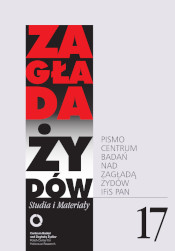

.jpg)
.jpg)


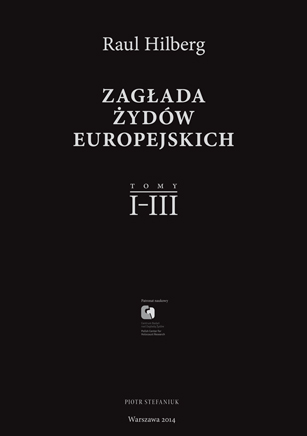
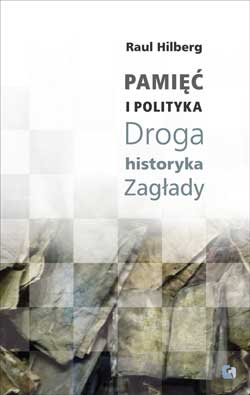
.jpg)
.jpg)
.jpg)
.jpg)
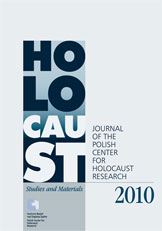

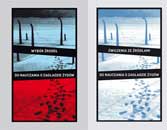
.jpg)
.jpg)
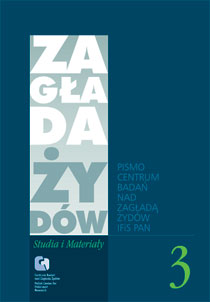
.jpg)
